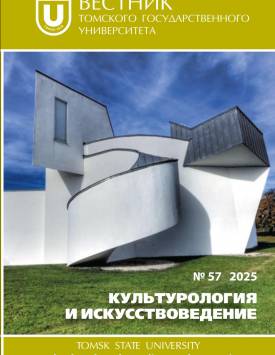Urban found-art and the problem of museification of contemporary street art
The status of street art is rapidly changing in the contemporary world. As recently as 10-20 years ago, street art was marginal, illegal and was not fully considered as art. By now it has become, on the one hand, truly mass, and on the other hand, it has become an object of interest for art institutions. Every year there are more and more street art festivals and open-air street art museums. This process of discursive appropriation, the museification of street art, was described and predicted by Jean Baudrillard, who saw the value of street art in its ability to remain apart from ideological and institutional identification. The aim of this article is to find and describe examples of street art that have an intrinsic immunity to processes of museification. The author discusses several ways to find such examples. One is the resistance to museification with art materials that create difficulties in museum display (Belgian artist Marcel Broodthaers). Another way is the radical gesture of the artist destroying his own work (Italian street artist Blu). The focus of the article is on the work of Moscow poet and artist Andrei Cherkasov. His photographs of urban space objects are analyzed and identified as practices of urban found-art. This means that Cherkasov does not literally create street art objects, but “finds” them in urban space, revealing the artistic potential of urban infrastructure. Cherkasov focuses on excluded and insignificant objects without obvious pragmatics: scraps of adverts, rubbish on pavements, fallen leaves, writing on walls, cracks in facades and paint marks. Essential in the artist’s works is the characteristic of temporality and spatial instability, which is created by grasping the fluidity of the boundary between anonymity and publicity, randomness and schematism, openness and inaccessibility. The author of the article concludes that these qualities create the conditions that allow an artwork to avoid commercialization and museum reproducibility. The author declares no conflicts of interests.
Keywords
found-art, Andrei Cherkasov, museification, street artAuthors
| Name | Organization | |
| Martynov Mikhail Yu. | golossa@gmail.com |
References

Urban found-art and the problem of museification of contemporary street art | Tomsk State University Journal of Cultural Studies and Art History. 2025. № 57. DOI: 10.17223/22220836/57/20
